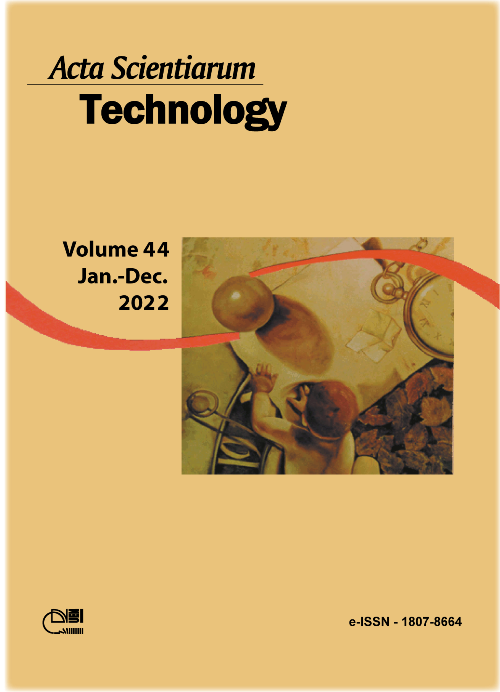Physiological response of the protective enzymatic mechanism of Pontederia parviflora Alexander caused by chromium absorption stress
DOI:
https://doi.org/10.4025/actascitechnol.v44i1.59876Palavras-chave:
Phytochellatyns; reactive species oxygen; heave metal; chlorophyll; phytotreatmentsResumo
The use of plants to eliminate organic or inorganic compounds is one of the alternatives for environmental treatment, but to guarantee the efficiency of process is necessary to know the effects in plant metabolism. This study sought to evaluate the enzymatic mechanism involved in the protection of the metabolism of Pontederia parviflora Alexander caused chromium absorption stress. The experiment was carried with solution of chromium (III) in three concentrations (10, 50 and 100 ppm) in the period of four days and evaluations daily. The concentration of chromium in the solution influenced the form of storage of metal in the tissues of plants. In 24 hours, there was increase of glutathione in the root in 10ppm solution and in 50 and 100 ppm the accumulation of glutathione occurs in the stem, coinciding with the peak absorption metal (48 hours). The activity of the catalase was higher in the roots, the peroxidase showed higher activity at the 50 ppm concentration, and the guaiacol had similar activity to catalase. The tolerance of P. parviflora in response to chromium stress occur for complex mechanisms, phytohormone-producing as significantly regulated under Cr stress and the formation of phytoquelatins was in sync with the absorption of metal. Due to the tolerance shown by P. parviflora, it becomes important for the environmental treatment of contaminated water
Downloads
Referências
Downloads
Publicado
Como Citar
Edição
Seção
Licença
DECLARAÇíO DE ORIGINALIDADE E DIREITOS AUTORAIS
Declaro que o presente artigo é original, não tendo sido submetido í publicação em qualquer outro periódico nacional ou internacional, quer seja em parte ou em sua totalidade.
Os direitos autorais pertencem exclusivamente aos autores. Os direitos de licenciamento utilizados pelo periódico é a licença Creative Commons Attribution 4.0 (CC BY 4.0): são permitidos o compartilhamento (cópia e distribuição do material em qualqer meio ou formato) e adaptação (remix, transformação e criação de material a partir do conteúdo assim licenciado para quaisquer fins, inclusive comerciais.
Recomenda-se a leitura desse link para maiores informações sobre o tema: fornecimento de créditos e referências de forma correta, entre outros detalhes cruciais para uso adequado do material licenciado.



















